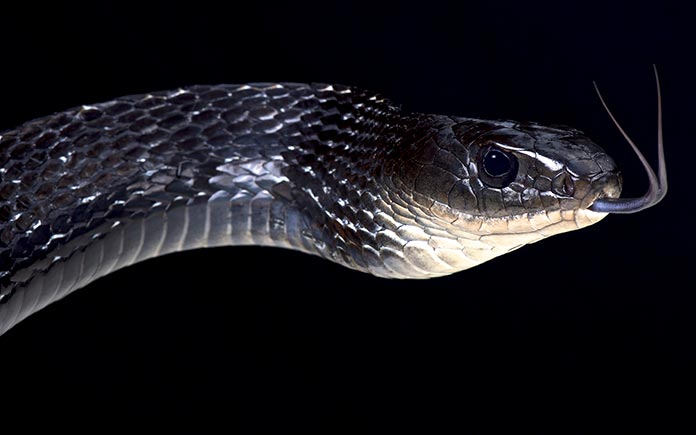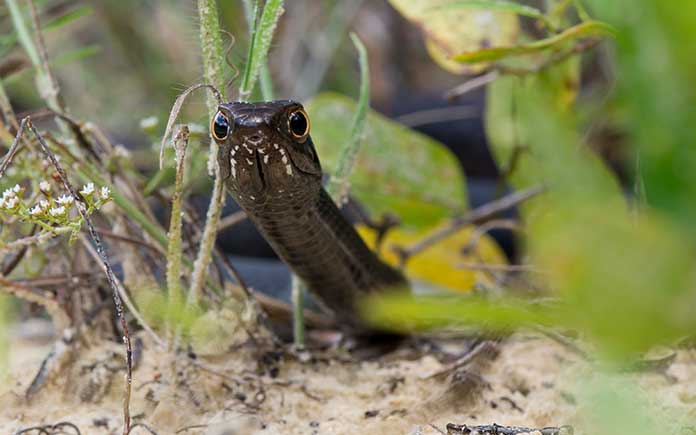
If you’ve got black snakes around your house, chances are they’re one of two types: North American rat snakes or black racers.
Both are nonvenomous, with white or grayish bellies, and eat mostly rodents and other small animals. Neither is out to hurt you — they’re only around because there’s food nearby, and that food isn’t you.
In a nutshell, here’s what you should know about each type:
| Black Rat Snakes: These slow-moving reptiles often freeze when confronted. If they get really upset, they might rattle their tail in the leaves as a warning. Some rat snakes are laid back, but others strike if handled, so don’t mess with them. Black Racers (pictured): Much faster-moving reptiles that prefer escape over conversation. They’re more likely to panic, flail around and bite if disturbed. |  |
Facts About Black Snakes
- Diet: Mostly eat rodents, lizards, birds and bird eggs. The Eastern rat snake, like the Eastern black racer, is a constrictor. They can climb trees and, if you don’t protect your birdhouses with baffles, they will invade nests.
- Smell: Rat snakes emit a musky smell when threatened.
- Habitat: Live in grasses, forests, marshes and buildings. Wherever there are food and dark shelter, you may find them.
- Benefits: Eat large quantities of rodents. If you can get over your fears, they’re good to have around your garage or barn to keep mice away.
Common Myths
Myth #1: They keep poisonous snakes away
Having a black snake won’t guarantee that there are no other snakes around.
The black racer snake in North America does occasionally kill and eat other snakes. Black rat snakes, however, aren’t known for snake killing.
In fact, they sometimes will hibernate with other species of snakes, including copperheads and rattlesnakes.
Myth #2: They mate with copperheads
Some people think these reptiles breed with copperheads to create a venomous black snake. That’s not true.
Their babies have colored markings that are easily mistaken for copperhead markings; but as they grow, those markings fade to black.
Myth #3: They’re harmless
Just because these snakes are good to have around doesn’t mean you’d want to be bitten by one — any more than you’d want to be bitten by a raccoon, a rat or a stray dog.
Any snake bite — even a nonvenomous one — is likely to be painful and full of bacteria, which can lead to infection.
So, treat all snakes respectfully, keep your distance, and avoid being bitten.



